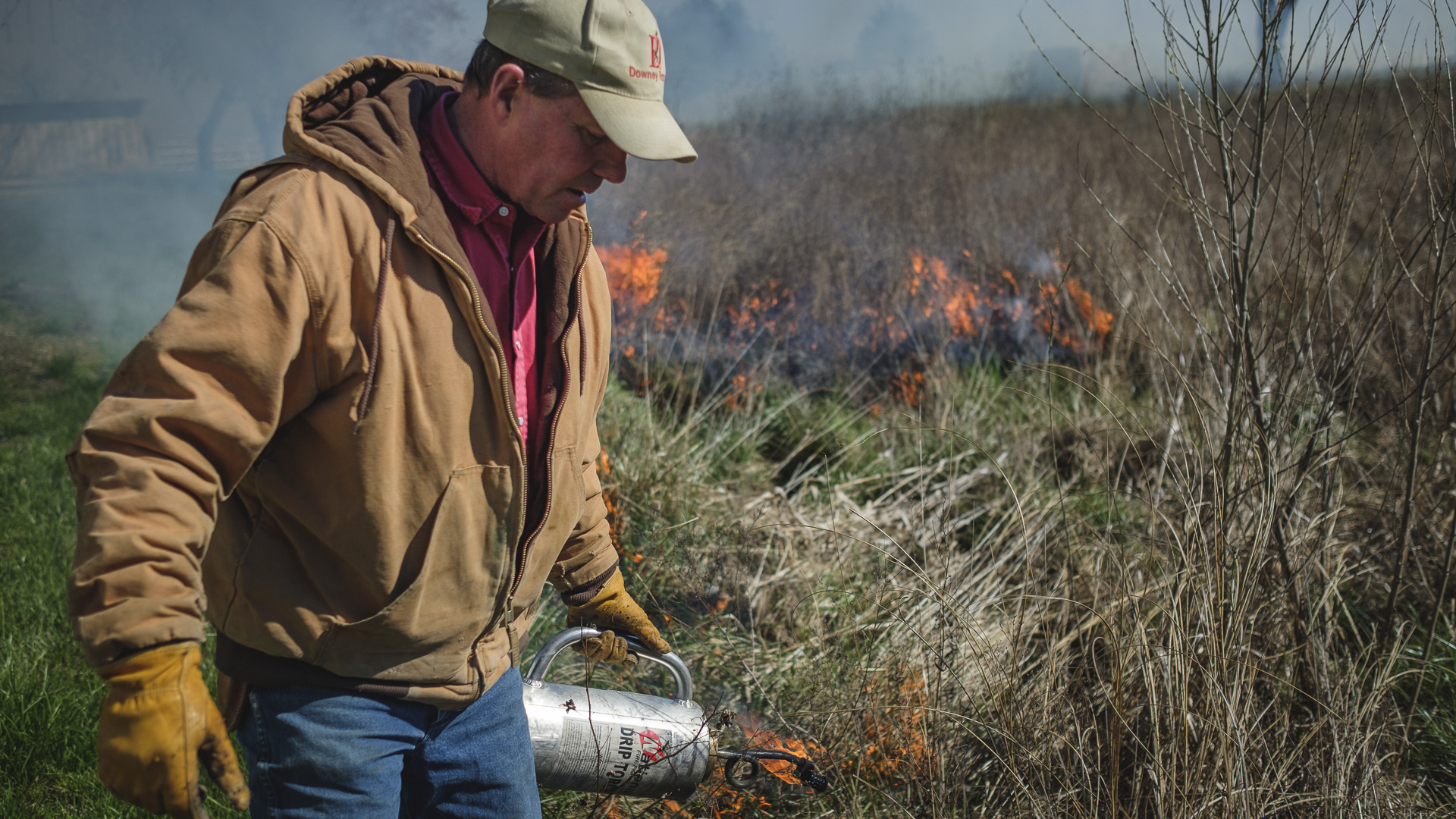Every spring, Central Kansas has the scent of smoke fill the air and a haze in the sky. The Flint Hills are burning.
However, this burning is not an accident or bad. It is actually prescribed! Just like humans needing vitamins or being prescribed exercise to be at their best, the Flint Hills needs prescribed burning to control invasive species that could overtake the prairie land.
Keep reading to learn some fun facts about Flint Hills' prescribed burning season!
1. Trees can overtake prairie land
Trees are typically viewed as having a positive impact wherever they are due to their ability to sequester carbon or provide for food and shelter for different species. However, in tallgrass ecosystems, trees are actually harmful.
While the Eastern Red Cedar is native to the Flint Hills, its spread and density always have been controlled by fire. Most natural fires are quickly extinguished due to their threats to land and structures. When fire doesn’t scorch areas of the Flint Hills, the Eastern Red Cedar can become overgrown and quickly take over a grassland.
The National Park Service1 states that the tall grass prairie is one of the most endangered ecosystems in the world with only 4% of its original acreage remaining. Beef producers help this ecosystem not only survive but thrive through prescribed burns, In fact, a study conducted at the Konza Prarie identified that, if fire is excluded from the land, the tallgrass prairie would transform into a cedar forest in as little as 30-40 years.
2. Kansas is not the only one
Prescribed burning is a popular practice across the United States. It happens on both prairies and woodland areas.
Other states include Oklahoma, Colorado and others.
3. All fires are well planned and have a whole team looking after the burn
One of the first things children are taught is that fire is dangerous. When irresponsibily managed, it could be. With that in mind, cattle ranchers and landowners that use prescribed burning methodoically plan their burns and wait for optimal wind and weather conditions.
The wind plays a big factor on when ranchers plan their prescribed burns because smoke drift can impact neighboring metropolitan areas.
To help mitigate the drift, the smoke management plan was created in 2011 so farmers and ranchers could plan their prescribed burns with minimal impact to residents in urban areas. The free online tool shows ranchers how likely it is for the smoke from a prescribed burn to impact areas as far away as Kansas City, Lawrence, Wichita or even Omaha. The plan is a balance between thoughtful ecosystem management of the tallgrass prairie and the comfort of people who have moved into the cities surrounding the Flint HIlls region.


4. Fires are natural
While in today's practice, fires on tallgrass ecosystems are controlled and man-made. Historically, wildfires are what shaped and helped the Flint Hills thrive.
In the past, natural fires were started by any one of the nearly 1 million lightning strikes that occur in Kansas every year. These fires spread, uninterrupted, throughout the prairie until saturated clouds brought rain that extinguished the flames and watered the fresh grass that soon would sprout and cover the land that would be grazed by bison.
The need for routine burns continues to this day. The plants depend upon a routine fire, the animals depend upon a routine fire, and the economy depends upon it as well.
5. Fires make the grass better for grazing
The grass in the Flint Hills is an important component of the Kansas cattle industry. Cattle spend the majority of their lives on grass, so it is important to producers that they take the best care of their cattle and land. Thankfully, this goes hand-in-hand.
Not only do cattle love the fresh grass, but research has also shown cattle gain more on pastures that have been burned because the old grass and thatch have been removed.
Want to learn more about prescribed burnings in Kansas?
Read more here or from Kansas Flint Hills Smoke Management!
1https://www.nps.gov/tapr/learn/nature/a-complex-prairie-ecosystem.htm#:~:text=Today%2C%20the%20most%20fertile%20and,the%20largest%20region%20still%20unplowed
